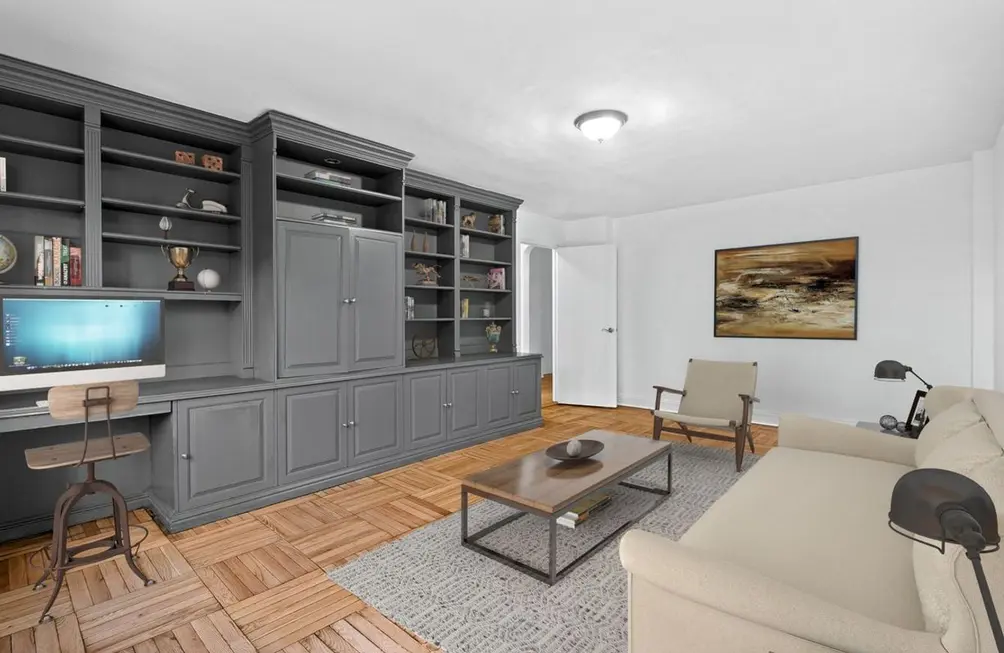 View from Museum Tower's penthouse available for $30M
View from Museum Tower's penthouse available for $30M
In the past, state and local taxes (SALT) were treated as an itemized deduction on one’s federal income tax filing. While this specific deductible didn’t have much impact people living in most red states where local and state taxes are notoriously low, for people in most blue states where taxes tend to be comparatively high, the ability to use one’s SALT to lower one’s overall tax liability at the federal level was a deduction with significant benefits. In 2018, as part of President Trump’s sweeping tax reforms, the SALT clause wasn’t eliminated, but it was capped at $10,000.
To appreciate just how great an impact the SALT cap has had on local homeowners, consider the following scenario. Before 2018, a New Yorker who was paying $9000 annually in local and state income tax and $16,000 in property tax would have been able to deduct $25,000 from their federal tax filing. The same person can now only deduct $10,000, which means they are now paying taxes on an additional $15,000 at the federal level.
In this article:
Given that many New York City homeowners pay much more than $10,000 in local real estate taxes alone, the 2018 SALT cap has had a particularly notable impact on New York City area homeowners. Still, a few home-related tax deductions remain.
What Can NYC Homeowners Still Count as Deductibles?
• SALT: The SALT deduction may be less significant, but it does still exist. To clarify, SALT refers to two types of taxes. First, there are the taxes one pays on real estate and other forms of personal property. Second, there are the taxes one pays either to the state or locality. Notably, one can only deduct state and local taxes—in most cases, state taxes are higher, making them at more strategic deduction. The total SALT deduction is now $10,000 for a couple filing a joint return. For individual filers, the cap is just $5,000.
• Home Mortgage Interest: According to the IRS, “home mortgage interest is any interest you pay on a loan secured by your home (main home or a second home).” The IRS also clearly states that the loan may be a mortgage to buy your home or a second mortgage. While this is certainly advantageous to most local homeowners, this is another tax break that no longer carries the benefits it did before the 2018 tax reforms. Moreover, people who own homes in expensive markets such as New York or California have been especially hard hit by the changes.
First, before the recent tax reforms, one could deduct mortgage interest on loans valued at up to $1 million. While mortgages issued prior to 2018 have been grandfathered, for anyone who has bought more recently or plans to buy in the future, there are now new caps. As clearly stated by the IRS, “You can deduct home mortgage interest on the first $750,000 ($375,000 if married filing separately) of indebtedness.” For buyers in expensive markets such as New York City, this restriction already has had notable impacts.
In addition to the new cap, recent tax reforms have changed the rules for deductions on home equity loans and lines of credit. Before 2018, one could take a deduction on home equity debt whether the debt was accrued to purchase a home, make improvements, or do something else (e.g., if you borrowed money against your home to pay off other debts or to pay for your child’s college education, interest on this debt was still treated as a deductible). Under the new law, the IRS states, “No matter when the indebtedness was incurred, you can no longer deduct the interest from a loan secured by your home to the extent the loan proceeds weren’t used to buy, build, or substantially improve your home.”
Home Office
You can still deduct part of your home as a business-related expense, but only if it meets certain conditions:•Regular and Exclusive Use: As per IRS guidelines, “You must regularly use part of your home exclusively for conducting business. For example, if you use an extra room to run your business, you can take a home office deduction for that extra room.”
• Principal Place of Business: The IRS also clearly states, “You must show that you use your home as your principal place of business. If you conduct business at a location outside of your home, but also use your home substantially and regularly to conduct business, you may qualify for a home office deduction.” The IRS further stipulates, “If the use of the home office is merely appropriate and helpful, you cannot deduct expenses for the business use of your home.”
So, what does this mean? Technically, if you have a separate room in your home where you conduct business regularly, you can safely consider it a deduction. If you’re a writer or editor living in a studio apartment who tends to work in bed, you may run into problems. Technically, working in bed could be considered—from the perspective of the IRS—just “appropriate and helpful.”
If you do qualify for a home office deduction, there are two ways to calculate the deduction: Simplified and Regular. The simplified method is a standard deduction of $5 per square foot of home used for business (up to 300 square feet). The regular deduction allows taxpayers to deduct a percentage of their home used for business. While the simplified calculation is easier, the regular calculation does carry some additional benefits. For example, if you opt to deduct a percentage of your home used for business, you may also take a depreciation deduction for any portion of your home used for business. Of course, this specific advantage only applies to people who own, not rent, the property they are using both as a residence and for business purposes.
• Home Improvements Made for Medical Reasons: As less widely known home-related deduction is connected to capital improvements made for medical reasons. The IRS stipulates, “You can include in medical expenses amounts you pay for special equipment installed in a home, or for improvements, if their main purpose is medical care for you, your spouse, or your dependent. The cost of permanent improvements that increase the value of your property may be partly included as a medical expense. The cost of the improvement is reduced by the increase in the value of your property. The difference is a medical expense. If the value of your property isn’t increased by the improvement, the entire cost is included as a medical expense.” These modifications and improvements include but are not limited to:
• Constructing an entrance or exit ramp
• Widening doorways
• Installing railings or support bars in bathrooms
• Adding handrails or support bars in other parts of the home
• Lowering or modifying kitchen cabinets and equipment
In other words, if you’re an older New Yorker or someone who has recently moved an elderly relative into your home and had to make improvements for accessibility, you may be able to deduct the expenses as medical expenses. Do bear in mind, however, that the IRS clearly stipulates, “Additional costs for personal motives, such as for architectural or aesthetic reasons, aren’t medical expenses.”
Would you like to tour any of these properties?
Just complete the info below.
Or call us at (212) 755-5544
Work/Live Apartments Available in NYC
From the Listing: LIVE-WORK CONDO LOFT-the 4th floor of 11 W 20th St is located in the heart of Flatiron is configured and used as an office, but this full floor loft can also be converted as-of-right to a 2-3 bedroom condo-loft residence to be used exclusively as a residence, or Live-Work or, you can maintain it as-is as an office. See floor plan and full details here.

From the Listing: Newly refurbished live-work opportunity at a fantastic price! If you like the idea of having your own PRIVATE STREET ENTRANCE access that is ideal for your life's needs, and access that offers you the potential for a (case by case) live-work scenario- this is the opportunity you have been waiting for! See floor plan and full details here.
From the Listing: Seize this opportunity to create a distinct loft residence of your own design. This raw loft space is available for the first time in over 50 years, this full-floor loft has no interior columns or obstructions. Your architect will have complete creative freedom to design a unique home as has been done on other floors in the building. Direct elevator access; North, South and East exposures; large industrial windows that bring in an abundance of natural light, high ceilings; video intercom, washers and dryers allowed. Storage closet transfers with the unit.
131 West 24th Street is a well maintained cooperative with 5 residential units and one commercial unit owned by the coop. Managed by Andrews Management with low monthly maintenance fees. Live-work is allowed with minimal traffic. Bike storage. Pet friendly. See floor plan and full details here.
131 West 24th Street is a well maintained cooperative with 5 residential units and one commercial unit owned by the coop. Managed by Andrews Management with low monthly maintenance fees. Live-work is allowed with minimal traffic. Bike storage. Pet friendly. See floor plan and full details here.
From the Listing: Continue to use it as a live-work combination or enjoy this extraordinary space as one huge residence! First-time offering and once-in-a-lifetime opportunity to own a private, 3400sf full-floor home in Le Premier, a luxury condominium located in the heart of midtown Manhattan! Designed with exclusivity and privacy in mind, there are only two residences per floor, and these two units have already been combined, offering a full floor with 6-7 bedrooms and your own private laundry room right outside your apartment door on your own private floor! See floor plan and full details here.
From the Listing: CHELSEA LIVE-WORK LOFT! This sprawling, 2,064-square foot loft, perhaps most remarkable for its impressive double-wide living room, also includes three large bedrooms easily modified to create a 4th bedroom or comfortable home office, as well as three full marble bathrooms, an oversized chef's open kitchen, individually controlled heating & AC, and abundant closet space. There are 11' beamed ceilings and red oak hardwood flooring throughout this beautiful corner home. Live large, it'ss all about the space!
See floor plan and full details here.
From the Listing: A keen eye for interior design can take this unique industrial loft from Space Odyssey to Tenenbaums. Loft 306 is a large wide-open loft; An ideal canvas with an expansive interior accentuated by its high ceiling, exposed piping and a column. See floor plan and full details here.
Would you like to tour any of these properties?
Just complete the info below.
Or call us at (212) 755-5544
Would you like to tour any of these properties?

Contributing Writer
Cait Etherington
Cait Etherington has over twenty years of experience working as a journalist and communications consultant. Her articles and reviews have been published in newspapers and magazines across the United States and internationally. An experienced financial writer, Cait is committed to exposing the human side of stories about contemporary business, banking and workplace relations. She also enjoys writing about trends, lifestyles and real estate in New York City where she lives with her family in a cozy apartment on the twentieth floor of a Manhattan high rise.






 6sqft delivers the latest on real estate, architecture, and design, straight from New York City.
6sqft delivers the latest on real estate, architecture, and design, straight from New York City.
